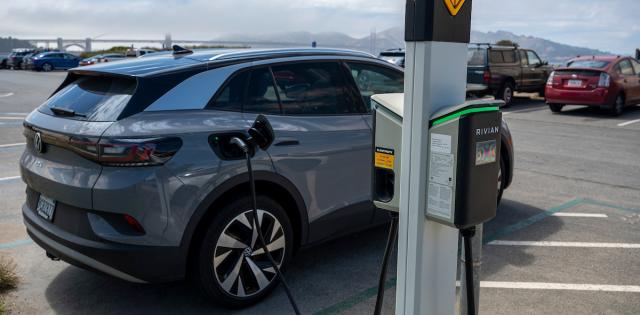The article below is sourced from Bloomberg Wire Service. The views and opinions expressed in this story are those of the Bloomberg Wire Service and do not necessarily reflect the official policy or position of NADA.
General Motors Co. can no longer say if it will make up to $14 billion in profit this year because a United Auto Workers strike, now in its sixth week, has made the company’s financial future too difficult to predict.
The Detroit carmaker pulled the forecast Tuesday while reporting better-than-expected third-quarter results. GM made an adjusted profit of $2.28 a share, beating Wall Street estimates of $1.84, thanks to growth in its North American business and historically high vehicle pricing. Revenue was $44.1 billion, almost $1 billion more than analysts had forecast.
The figures show how much pressure the strike has put the industry under, casting a shadow over an otherwise strong year in which the carmaker has gained market share. GM beat third-quarter estimates despite losing $200 million from the walkout during the period.
GM said strike costs have so far reached about $800 million. The company expects about $200 million a week in additional work stoppage-related costs going forward.
A UAW negotiator said last week the two sides were inching toward a tentative deal, but the withdrawal of guidance shows the end of the strike is as unpredictable as UAW President Shawn Fain, who has kept GM, Ford Motor Co. and Stellantis NV guessing by stopping work at select plants.
“We’re not going to speculate on the duration and extent of the strike,” GM Chief Financial Officer Paul Jacobson said on a call with journalists. “We remain hopeful we’ll continue to make progress and get this resolved.”
On Friday, Fain said the union was close to a deal with all three automakers but that there was “more to be won.” The union has 23% raises on the table from all three automakers but wants a 25% raise, people familiar with the matter told Bloomberg earlier this month.
Chief Executive Officer Mary Barra said in a letter to shareholders that GM needs a deal that will allow the company to achieve 8%-10% adjusted profit margin targets in North America.
“Accepting unsustainably high costs would put our future and GM team member jobs at risk, and jeopardizing our future is something I will not do,” she said.
Strike Eroding Profits
The Detroit automaker’s third-quarter profits fell compared with the same period last year. Net income slipped $241 million to $3.1 billion. That was mostly related to strike costs, though higher replacement-part costs played a small role.
GM rose less than 1% premarket trading to $29.45 as of 7:25 a.m. The stock was down about 13% for the year as of the close on Monday.
To offset higher expected labor costs, Barra said that GM plans to reduce fixed costs by $2 billion coming out of 2024.
“It’s been clear coming out of COVID that wages and benefits across the US economy would need to increase because of inflation and other factors,” she said in the letter.
The company grew its automotive free cash flow by more than $300 million in the last quarter to $4.9 billion. It was on pace toward hitting the high end of its guidance range before the strike started, Jacobson said.
GM will provide new financial guidance for 2024 once a union contract is ratified. The Detroit automaker had previously projected 2023 earnings before interest and taxes to reach between $12 billion and $14 billion, compared to its previous guidance that peaked at $13 billion. It also had forecast earnings per share for the full year of between $7.15 and $8.15, up from a maximum of $7.35 a share previously.
EV Slowdown
The automaker also is rethinking growth plans for electric vehicles as sales of plug-ins have been slower than anticipated. GM said it will put off opening its electric pickup truck plant in Orion, Michigan, outside Detroit until 2025 — a year later than it previously targeted. The move will delay capital spending by $1.5 billion in 2024 to 2025, Jacobson said.
That means GM’s previous goal of selling 400,000 EVs next year won’t happen, the CFO said.
The company will continue manufacturing battery-powered versions of its Chevrolet Silverado and GMC Sierra pickups alongside the electric Hummer at a plant in Detroit, but won’t add new production until the company better understands market demand and makes improvements to the trucks that boost their profitability.
Jacobson said GM still plans to have the new truck plant up and running to give the company enough production to build 1 million EVs in the US by the end of 2025.
One bright spot is that GM is profitable in every region. But there are signs of trouble in some business lines.
While GM’s China operations are profitable, income from the country fell 42% to $192 million.
Rising interest rates also have slowed growth in GM Financial’s lending business, where profits fell 19% to $741 million.
For more stories like this, bookmark www.NADAheadlines.org as a favorite in the browser of your choice and subscribe to our newsletter here:












